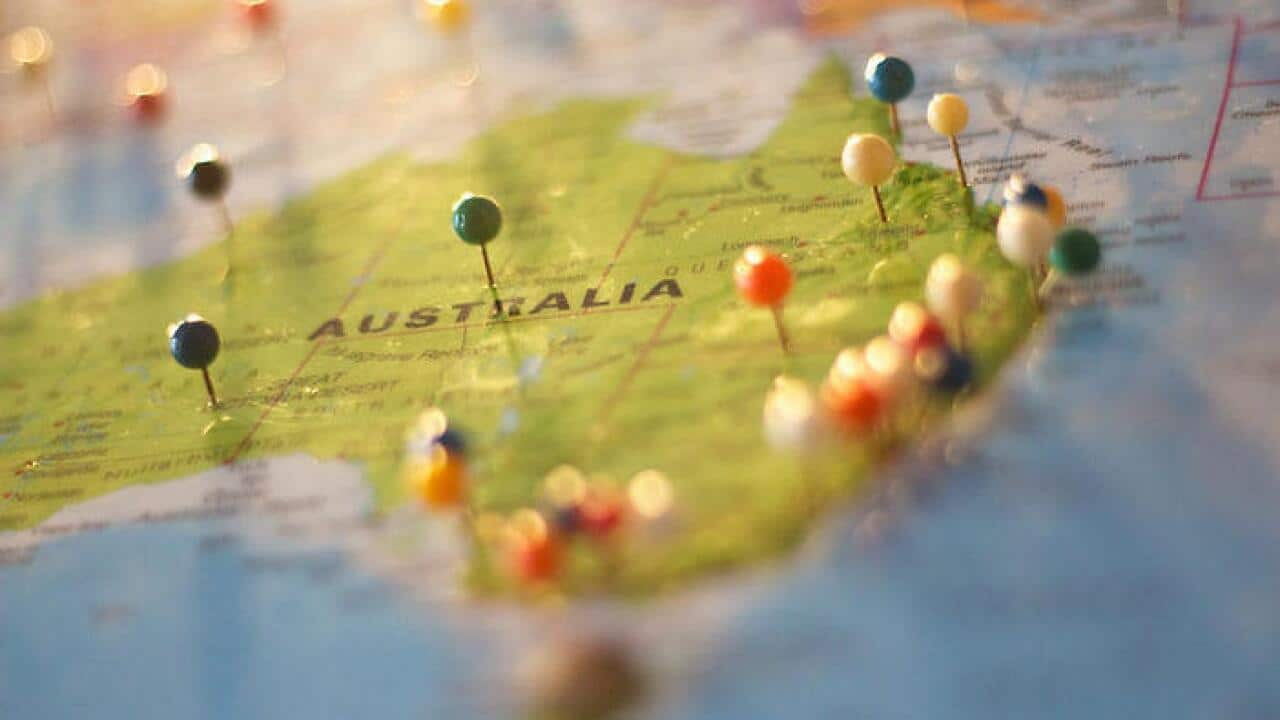When Pakistani migrant Ishtiaq Ahmed was considering a destination to call home for his young family in Australia, Adelaide was at the top of his list.
“Adelaide is one of the best destinations in Australia in terms of education, travel times [to work], spectacular beaches, hills,” he told SBS News.
“Such a beautiful and welcoming people. The weather is great here in Adelaide.”

Ishtaq Ahmed, his wife Zartaisha Kanwal and their two kids Hashir and Zayn. Source: SBS
The 32-year-old moved to Adelaide in 2017 with his wife Zartaisha Kanwal and child and soon later found work in mechanical engineering on a subclass 190 Skilled Nomination Visa.
As the federal government moves to put the brakes on migration to the major population centres of Melbourne and Sydney and instead drive new arrivals to the regions, Mr Ahmed is far from alone in looking to South Australia.
Regional visas surge
The latest migration figures from the Department of Home Affairs shows a surge in the number of regional visas being granted to migrants moving to South Australia.
In the three month period between July and September, 1,682 regional visas were granted to those moving to the state, up 172 per cent on the same period in 2018.
At the same time, the number of regional visas being granted in Victoria rose by 65 per cent of the 2018 intake and New South Wales 78 per cent.
Queensland was the only state that outstripped South Australia in terms of growth, with a massive 233 per cent increase in the number of regional visas granted.
Nationally the number of regional specific visas granted rose 124 per cent to 6,350, highlighting the federal government's push to get more migrants into the regional areas.
All of South Australia, including Adelaide, is considered a ‘regional area’ for the purposes of migration, despite the city having a population of 1.3 million.
With changes coming next month to the number and type of visas on offer under the federal skilled migration program, experts say migrants wanting to gain skilled visas in the major cities will have an increasingly difficult time.

Mr Ahmed says he and his family love living in Adelaide. Source: Jarni Blakkarly/SBS News
In total 23,000 new visa places will be on offer each year as the existing visa subclasses 489 and 187 are removed.
They will be replaced by the Skilled Work Regional visa (subclass 491) and Skilled Employer-Sponsored Regional visa (subclass 494). Both will have a pathway to permanent residency for migrants who stay in the regional areas for at least three years.
“It is notably more difficult for people who want to get a points tested visa in Melbourne or Sydney. Many of these visas have been moved to regional areas,” Bob Birrell President of the Australian Population Research Institute told SBS News.
While the government is driving more migrants to the regions for temporary stays, in March it cut the overall permanent migration level from 190,000 places to cap it at 160,000 places for the next four years.
But Dr Birrell questioned the long-term effectiveness of the plan to get more migrants out to regional areas.
“They can’t corral people forever in regional areas, that would create two classes of citizens in Australia, but they can do it on a temporary basis,” he said.
South Australia’s Minister for Innovation and Skills David Pisoni, whose portfolio covers the state’s skilled migration program, said there was a significant shortage of skills in regional South Australia, with half of all advertised job positions going unfilled.
The new skilled migration programme coming in November also provides 25,000 mostly regional work visas to be offered at the request of states, something Mr Pisoni welcomed.
“We think the process should be driven bottom-up and the states should have more autonomy to do that,” he told SBS News.
“The federal government has been very cooperative in understanding the barriers that South Australia has and helping us remove those barriers to help South Australia grow,” he said.
He added that he would like to see Australia look more closely at the Canadian migration system, where states had a greater level of input in setting migration levels.
When Mr Ahmed first arrived in Adelaide he had to work odd jobs, including delivering food, for six months before he landed a job in his trained profession as a mechanical engineer.
He has no plans to leave Adelaide and hopes one day his whole family will have the chance to become Australian citizens something his visa provides a pathway for.
“This is one of the best countries in the world. We would love to be part of this great country as a citizen, and I would love my children to grow here and serve this great country,” he said.


